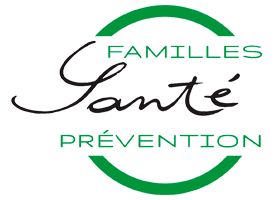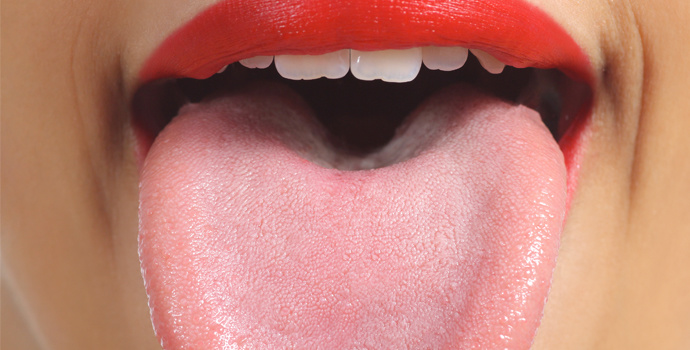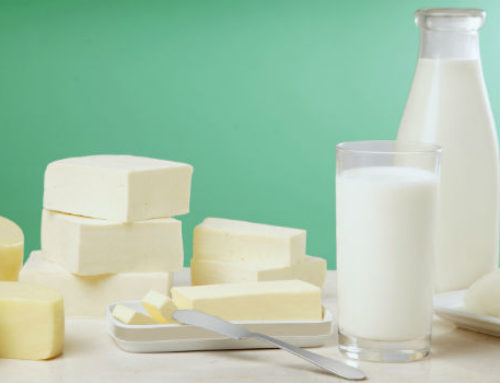Letter No 4 of the Professor Henri Joyeux – 8th of April 2014
Dear reader and friend of health !
I am very pleased to meet with you every week through this letter. You already are 150,000 to have signed up to this free letter, a media that is willingly free, scientific and aims at reaching as many people as possible. I received many emails asking me if I truly was the author of this weekly letter. Hence, I confirm and reassure you: yes, I am the true author of this information letter.
Are we aware of how our « Palate of Flavors », our mouth, works?
Certainly not, since we eat so fast, so badly that we lose the taste of the nutrients available in our foods. We are doing no better than animals. Animals do have saliva,, but theirs does not contain any taste enzymes. Hence, they do not take the time to taste food: they just gobble it up. And when we just barely chew each bite three times, we do just the same.
So, a short reminder is necessary to better understand this respiratory and digestive part of our body, which allows us at the same time to breathe, taste, chew, eat, talk, whistle, or sing! It is a mechanical wonder, that is in such bad shape once saliva is lacking, when foods do not taste any more, when teeth fall out, when the air does not pass well, when foods go the wrong way, when they don’t want to go down the esophagus to the stomach.
Imagine for an instant that you no longer have a tongue: you aren’t able to talk nor eat, and anything you put into your mouth is virtually tasteless, not to talk about the hardship you have swallowing.
Imagine now that you have no saliva… You will try to find it incessantly, and drinking won’t suffice. Patients that have ENT type cancers (head and neck cancers) are treated with radiotherapy, which does a bad job at protecting the salivary glands, which can cause dry mouth for lack (hyposialia or oligoptyalism) or even absence of saliva. This is really disabling when it comes to talking, eating, tasting foods; shortly, for eating decently. You could lose your taste for living!
Your Palate of Flavor is a Wonder Meant for You to Enjoy!
The tongue and taste buds are spread out over the whole surface of the tongue, called the lingual surface.
The tongue is made of twelve tiny muscles combined into a single big muscle. The tongue’s capacity to move modulates the voice.
Taste buds are located on the surface of the tongue. If you look closely in the mirror, you will see little reliefs on your tongue in the mirror. These are the taste buds. They are minuscules cells on which all flavors land. Taste buds take different forms: most are filiform (take the shape of a string), and some are fungiform (in shape of a mushroom) and are spread out on the tip of the tongue, and some take the shape of a chalice. The latter are the biggest buds. There are nine, and they take the shape of an open V, which tip is directed at the back of the mouth. Their location at the back of the mouth demonstrates how important it is to keep food and drinks in your mouth before swallowing so as to taste all the aromas. Finally, one can find some leaf-shaped taste buds and wreath-shaped taste buds on the sides of the tongue.
Some taste buds are also located inside of the cheeks, on your gums, on the surface of the palate and even on the uvula. These are linked together by very thin sensory nerves. Our tongue’s taste buds renew every ten days, which means that we must stimulate them all the time, since every day a certain number dies, while others are born to serve another ten days. Progressive loss of taste (or of the sense of smell) is one of the first symptom of autoimmune diseases such as Alzheimer’s and Parkinson’s.
People that have to undergo chemotherapy take what are called “antimitotic” medication, which means that they stop the life of any cell currently in the process of multiplying. This is true for white blood cells, which number significantly decreases since their life span only typically doesn’t go beyond 7 days. This is also the case of the tongue’s taste buds that are “abraded” by chemo. Now you understand why people undergoing chemo partially lose the sense of taste, and progressively recover after the end of the treatment.
Thirty-Two Teeth Total
Your teeth are planted at the bottom on the mobile mandible, and on top, on the upper jaw. There are 8 incisors, 4 canines, 8 premolars and 12 molars. They are not only meant for smiling. They are designed for chewing, blending foods and transforming them from a solid state to a pasty, or even liquid state.
The esophagus is a muscular pipe which walls are joined. They should not receive anything but pasty or liquid foods. However, too often, we let pieces of meat, fruits, bread go down the esophagus. This only results in irritating the esophageal mucosa, and traumatize it on a regular basis, which could trigger inflammation (esophagitis ) or even ultimately an esophageal cancer, or a build-up of diverticula for persons undergoing great stress.
The diverticula of the esophagus is a hernia located in the wall of the esophagus, generally close to the neck, and that can become enormous due to the accumulation of fluids. This hernia of the cervical esophagus is used by fire-eaters in fairs. They fill it up with strong alcohol through a brisk movement of neck, usually to the left side, and “spit” in front of a lit lighter.
White Teeth : What You Should Know
The fashion of white teeth crossed the Atlantic and is increasingly promoted in Europe. Never give in to it under 16 years of age, or if you are pregnant or breastfeeding. It can be difficult to bear sensibility to hot, cold or touch. It depends on the products that are used. Toothpastes are usually not composed of no more than 10% whitening agents. These products contain hydrogen peroxide (that is also used as disinfectant) but must be well dosed? That is the reason why it is often used by dentist and professionals. In whitening kits, one can also find carbamide peroxide, which is less abrasive than hydrogen peroxide. This product permeates tooth enamel and erases spots.
Be careful that despite the treatments, crowns will keep their original color, so you risk finding a discrepancy in coloring, which might affect your smile. Moreover, peroxide will sting in your mouth as soon as it comes in contact with your gums. More than 50% of people undergoing whitening treatment mention this sensation. For less than $50, you could find very efficient treatments, rather than going to the dentist and pay full price (in France up to € 100) to obtain the same result. Toothpastes containing potassium nitrate help reducing teeth sensibility.
Six Main Salivary Glands, and Many Accessory Ones
There are three salivary glands on each side: the parotid glands are located under the ears, sub-maxillary glands are located under the maxillary bone, and the submandibular glands lay under the tongue. They are capable of fabricating each day one to 1.2 liters of saliva ( 2 to 2.5 pints) , i.e. as much as the stomach (that generates gastric fluid), the liver (that generates bile) or the pancreas (that generates pancreatic juice).
If we chew properly, i.e. for a long time, each salivary gland will pour out its own saliva into the palate by passing through little tubes ending in mini apertures inside of the cheeks and under the tongue. They are visible by lifting the tongue. By lighting the inside of the mouth well, you can see tiny holes at the outskirt of the sublingual glands, where saliva spurt from when one pushes a few times under the chin. If we do not chew our food, not enough or improperly, we do not fabricate enough saliva, i.e. 300 to 500 ml ( ⅔ pint to 1 pint), which is clearly insufficient and can hinder the process of digestion.
There exist also some accessory salivary glands, that are microscopic and spread out throughout the mucous membrane of the cheeks. They continuously provide moisture to our cheeks. Let us stress that our body renews the cells of this mucous membrane of the cheeks every 5 days.
Cranial Nerves Capture All Tastes and Bring Them to the Brain
Three out of our twelve cranial nerves [1] are tasked with making us perceive a great combination of flavorful nuances beyond the five classic ones: sweet, salty, acidic, bitter and « umami » (Japanese word for “flavorful”). All parts of the tongue are capable of perceiving these 5 basic flavors.
Motor and sensitive nerves lend the tongue at the same time mobility and an extraordinary sensibility, or even sensory capacity.
Digestion Begins in Our Mouth
It is in our « Palate of Flavors » that digestion begins, with the help of saliva and enzymes.
Saliva plays a very important role by soaking all foods that are chewed by our teeth, reducing all most solids parts of our foods to a fluid or pasty state so that they can go down the esophagus to the stomach without obstacle.
Saliva is made of minerals (sodium, potassium, chlorine), of small amounts of sugar and urea, and of hormones (depending on the current stage of a woman’s cycle). Dentists perfectly know at what stage of her cycle a femme is, even if she takes a contraceptive pill, just by looking at her saliva. Saliva regulates our mouth’s pH by neutralizing the first acid content from food.
Foods’ Flavors are Brought Out by Saliva
Saliva contains enzymes that reveal tastes. Note that animals do not have enzymes in their saliva. They swallow very fast. Let’s not mimic them !
Saliva enzymes can only fulfill their task if foods remain in our mouth long enough, so as to soak into the saliva and enzymes that the mouth contains. Hence, the process of digestion starts in your mouth. These three enzymes are called:
● First, salivary amylase or ptyalin (it is made to pre-digest starch ), which is a maltase made to digest maltose,
● Second, the lysozyme capable of destroying bacteria. It is a natural antibiotic that releases antibodies, specifically immunoglobulin A, that keeps pathogens from establishing themselves in the oral cavity;
● Third, lingual lipase is a lactoperoxydase, i.e. it breaks down fatty acids. It plays a role in local immunity building. It is specially important for infants, since it assists smooth digesting of breast milk fats.
Hence it is saliva that reveals the tastes of the foods we eat.
The Dr Rainer Wild Foundation, of the Internationaler Arbeitskreis für Kulturforschung des Essens (International Circle for Research in Nutrition Culture)(Mitteilungen 2008, H. 16, S. 34–42) cites this very enlightening example :
« If we close our eyes and put a lump of sugar or of rock salt on our tongue, it is difficult to distinguish between the two of them while the tongue is dry. Only by dampening the lump or rock with saliva that salt or sugar molecules are freed and that the taste will be revealed to us as sweet or salty, thanks to water, which is the dominant component of saliva. ”
Saliva also plays an antiseptic role, protecting the esophagus all the way down. Let us not forget that without knowing it, we swallow 1500 to 2000 times per day, including at night, although during this resting time, salivary secretion decreases.
Not taking time to chew our food means that we don’t know how to taste food. By doing this, we also disturb digestion from the very beginning, and expose ourselves to bad digestion in our stomach and beyond. This explains frequent gas, bloating and other discomforts that occurs along our digestive tract all the way down the colon and rectum, which are areas of the body where our body waste is selected and prepared.
Our “Palate of Flavors”, a kingdom of tastes, is obviously in close relation with our sense of smell. Each and every one of us has experienced the mouthwatering while smelling the wonderful smells of a delicious upcoming meal. In reality, the smells and odors trigger variably strong saliva secretion. This is why one of our next letters will focus on our sense of smell, which was impeccably located at the tip of our Palate of Flavors.
Best Regards,
Professor Henri Joyeux
Source
[1] The Seventh pair, facial nerves, for the fungiform tastebuds located at the tip of the tongue; the 9th pair, the glossopharyngeal nerves for the circumvallate papillae; the tenth pair, vagus nerves for the tastebuds that are spread out all around the tongue.
La Lettre du Professeur Joyeux is an independent and free information service est un service. It specializes providing the wider public and families with disease prevention information. Click here to subscribe to the letter.
This health advice is provided free of charge by this organization and cannot be considered as personal medical advice. No treatment should be initiated solely on the basis of this content. It is strongly advised to consult a properly licensed health professional to seek responses with regard to one’s health and well-being. No information or product mentioned on this website is meant to diagnose, treat, atone or cure a disease.
You have a Personal Health Question ? ( Confidential response) or you wish to enjoy our exclusive services?
Become an exclusive member of our association for one year by clicking HERE.






